In addition to albums, several standalone singles were to be key to 1983 for those with a preference for the synthesized form.
NEW ORDER’s ‘Blue Monday’ and KRAFTWERK’s ‘Tour De France’ became iconic works while the David Sylvian and Ryuichi Sakamoto collaboration ‘Forbidden Colours’ not only bravely tackled a topic during a period when gay pop stars and media personalities still felt unable to openly come out, but also reinforced the value of a movie tie-in.
Sampling was no longer the preserve of wealthy musicians and their Fairlights as the cheaper but still expensive Emulator became more widely available. Meanwhile the Roland Jupiter-6, Prophet 600, the Roland TR-909 and Roland MSQ-700 became the first instruments available with MIDI. Digital synthesis became affordable via the astonishingly affordable Yamaha DX7, although it proved to be a nightmare to programme. As a result, the music world fell into a preset trap overnight with the sound of simulated slap bass, flute and harmonica appearing on almost every pop record for the next few years…
But synthesizers and electronic sounds ceased being a desired texture as the huge success of David Bowie with his ‘Let’s Dance’ album meant every band would soon add a brass section to their line-up. SPANDAU BALLET, who perhaps may have triggered pop’s brass aspirations back in 1981 with ‘Chant No1’, went all smaltzy with ‘True’ and this coincided with the rise of pseudo-soul pop such as WHAM! and CULTURE CLUB. Meanwhile, in alternative circles, bands like THE SMITHS were spearheading the backlash with their frontman Morrissey declaring “there was nothing more repellent than the synthesizer…”
However, the old guard from Synth Britannia soldiered on and continued to experiment while acts who perhaps were not electronically-minded at their heart could see the benefits of embracing the developing technology, such as having more streamlined line-ups and dispensing with drummers.
However, a sign of the confusing artistic mindsets of the period came with Gary Numan’s ‘Warriors’ album and its dreadful artwork with our hero looking like Mad Max after a visit to the hair salon, but annoyed that his mulleted mane had been dyed the wrong colour. Things had looked promising for his return to the UK live stage after retiring in 1981, but he fell out with producer Bill Nelson during the recording sessions.
With the embracement of jazz funk influences and sax solos appearing whether they were really needed or not, the result was a well-played if confused record that was the beginning of a creative confidence crisis that would afflict Numan for at least another decade.
So here are 20 albums selected by ELECTRICITYCLUB.CO.UK as contributing to the electronic legacy of 1983. Listed in alphabetical order, there is a restriction of one album per artist moniker where beyond this place, the rains are falling hard…
CABARET VOLTAIRE The Crackdown
 Richard H Kirk and Stephen Mallinder became seduced by the sequenced adventures of NEW ORDER and electronic dance music emerging from New York. Signing to Some Bizzare and licensed to Virgin Records, ‘The Crackdown’ was produced by Flood and featured contributions from Dave Ball of SOFT CELL on the title song and ‘Animation’. Meanwhile the stark single ‘Just Fascination’ helped the album become CABARET VOLTAIRE’s highest ever UK chart entry at No31.
Richard H Kirk and Stephen Mallinder became seduced by the sequenced adventures of NEW ORDER and electronic dance music emerging from New York. Signing to Some Bizzare and licensed to Virgin Records, ‘The Crackdown’ was produced by Flood and featured contributions from Dave Ball of SOFT CELL on the title song and ‘Animation’. Meanwhile the stark single ‘Just Fascination’ helped the album become CABARET VOLTAIRE’s highest ever UK chart entry at No31.
‘The Crackdown’ is still available via Mute Artists
https://mute.com/artists/cabaret-voltaire
CHINA CRISIS Working With Fire & Steel – Possible Pop Songs Volume 2
 Produced by Mike Howlett, ‘Working With Fire & Steel’ allowed CHINA CRISIS to deliver a more cohesive album following the four producers who steered their debut ‘Difficult Shapes & Passive Rhythms’! Best known for the brilliant ‘Wishful Thinking’, the album is much more with melancholic synth melodies and woodwind counterpoints, from feistier numbers such as ‘Animals In Jungles’ to more atmospheric set pieces like ‘Here Comes A Raincloud’ and ‘The Soul Awakening’.
Produced by Mike Howlett, ‘Working With Fire & Steel’ allowed CHINA CRISIS to deliver a more cohesive album following the four producers who steered their debut ‘Difficult Shapes & Passive Rhythms’! Best known for the brilliant ‘Wishful Thinking’, the album is much more with melancholic synth melodies and woodwind counterpoints, from feistier numbers such as ‘Animals In Jungles’ to more atmospheric set pieces like ‘Here Comes A Raincloud’ and ‘The Soul Awakening’.
‘Working With Fire & Steel – Possible Pop Songs Volume 2’ is still available via Caroline International
https://www.facebook.com/chinacrisisofficial
DEPECHE MODE Construction Time Again
 The first album featuring Alan Wilder as a full member as well as Gareth Jones as Tonmeister, ‘Construction Time Again’ saw DEPECHE MODE experimenting with found object sampling. Mixed at Hansa Studios in West Berlin, it was a socially conscious record featuring Cold War paranoia on ‘Two Minute Warning’, environmental concerns on ’The Landscape Is Changing’ and the now ironic anti-capitalist statements ‘More Than A Party’, ‘Pipeline’ and ‘Everything Counts’!
The first album featuring Alan Wilder as a full member as well as Gareth Jones as Tonmeister, ‘Construction Time Again’ saw DEPECHE MODE experimenting with found object sampling. Mixed at Hansa Studios in West Berlin, it was a socially conscious record featuring Cold War paranoia on ‘Two Minute Warning’, environmental concerns on ’The Landscape Is Changing’ and the now ironic anti-capitalist statements ‘More Than A Party’, ‘Pipeline’ and ‘Everything Counts’!
‘Construction Time Again’ is still available via Sony Music
DURAN DURAN Seven & The Ragged Tiger
 DURAN DURAN may have yielded a 1984 No1 single in a Nile Rodgers remix of ‘The Reflex’ but overall, ‘Seven & The Ragged Tiger’ was an over produced disappointment. Recorded in France and Australia, tensions between the band and producer Ian Little led to the ubiquitous Alex Sadkin to be brought in. Despite this, highlights included the punchy ‘Shadows On Your Side’, the JAPAN inspired instrumental ‘Tiger Tiger’ and the forgotten single ‘New Moon On Monday’.
DURAN DURAN may have yielded a 1984 No1 single in a Nile Rodgers remix of ‘The Reflex’ but overall, ‘Seven & The Ragged Tiger’ was an over produced disappointment. Recorded in France and Australia, tensions between the band and producer Ian Little led to the ubiquitous Alex Sadkin to be brought in. Despite this, highlights included the punchy ‘Shadows On Your Side’, the JAPAN inspired instrumental ‘Tiger Tiger’ and the forgotten single ‘New Moon On Monday’.
‘Seven & The Ragged Tiger’ is still available via EMI Music
ENDGAMES Building Beauty
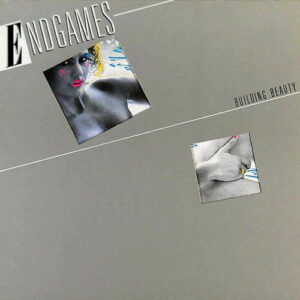 The success of ABC and HEAVEN 17 heralded a new age of technologically enhanced blue-eyed soul. One band with aspirations in that field were Glasgow’s ENDGAMES. ‘Universe Won’t Mind’, ‘Desire’ and ‘Waiting For Another Chance’ were among the standouts. Meanwhile ‘Love Cares’ was like a funky CHINA CRISIS walking into the recording sessions of ‘The Lexicon Of Love’ and by coincidence, singer David Rudden had a passing resemblance to Gary Daly!
The success of ABC and HEAVEN 17 heralded a new age of technologically enhanced blue-eyed soul. One band with aspirations in that field were Glasgow’s ENDGAMES. ‘Universe Won’t Mind’, ‘Desire’ and ‘Waiting For Another Chance’ were among the standouts. Meanwhile ‘Love Cares’ was like a funky CHINA CRISIS walking into the recording sessions of ‘The Lexicon Of Love’ and by coincidence, singer David Rudden had a passing resemblance to Gary Daly!
‘Building Beauty’ was originally released on Virgin Records, currently unavailable
https://www.discogs.com/artist/50709-Endgames
BRIAN ENO Apollo: Atmospheres and Soundtracks
 Recorded as a soundtrack to a documentary about the Apollo moon missions, Brian Eno wanted to convey the feelings of space travel and weightlessness as a reaction to the uptempo, manner of space travel presented by news reels of the day with their fast cuts and speeded up images. Although based around a Yamaha DX7, it was instrumentally varied featuring Daniel Lanois’ countrified guitar on its best known track ‘Deep Blue Day’, as well as ‘Silver Morning’ and ‘Weightless’.
Recorded as a soundtrack to a documentary about the Apollo moon missions, Brian Eno wanted to convey the feelings of space travel and weightlessness as a reaction to the uptempo, manner of space travel presented by news reels of the day with their fast cuts and speeded up images. Although based around a Yamaha DX7, it was instrumentally varied featuring Daniel Lanois’ countrified guitar on its best known track ‘Deep Blue Day’, as well as ‘Silver Morning’ and ‘Weightless’.
‘Apollo: Atmospheres and Soundtracks’ is still available via Virgin / EMI Records
EURYTHMICS Sweet Dreams (Are Made Of This)
 The first of two EURYTHMICS albums in 1983, after their German-inspired debut ‘In The Garden’, Annie Lennox and David A Stewart explored the synthesizer and acquired a Movement Drum Computer. Recorded in their newly equipped 8 track home studio, ‘Love Is A Stranger’ was the breakthrough. Despite its hopeless nihilism, the title song went global but there were other notable songs such as ‘I Could Give You (A Mirror)’, ‘I’ve Got An Angel’ and the brilliant forgotten single ‘The Walk’.
The first of two EURYTHMICS albums in 1983, after their German-inspired debut ‘In The Garden’, Annie Lennox and David A Stewart explored the synthesizer and acquired a Movement Drum Computer. Recorded in their newly equipped 8 track home studio, ‘Love Is A Stranger’ was the breakthrough. Despite its hopeless nihilism, the title song went global but there were other notable songs such as ‘I Could Give You (A Mirror)’, ‘I’ve Got An Angel’ and the brilliant forgotten single ‘The Walk’.
‘Sweet Dreams (Are Made Of This)’ is still available via RCA
JOHN FOXX The Golden Section
 John Foxx had envisioned ‘The Golden Section’ as “a roots check” with a psychedelic electronic rock flavour. This came to a head on a revised ‘Endlessy’ which captured an accessible uptempo euphoria. With folk laden overtones, ‘Ghosts On Water’ was a highlight along with the powerful opener ‘My Wild Love’. But away from these influences, ‘Twilight’s Last Gleaming’ was a glorious haunting closer. Foxx later remarked the album was a mistake as he tried to “fit too many favourite things together”.
John Foxx had envisioned ‘The Golden Section’ as “a roots check” with a psychedelic electronic rock flavour. This came to a head on a revised ‘Endlessy’ which captured an accessible uptempo euphoria. With folk laden overtones, ‘Ghosts On Water’ was a highlight along with the powerful opener ‘My Wild Love’. But away from these influences, ‘Twilight’s Last Gleaming’ was a glorious haunting closer. Foxx later remarked the album was a mistake as he tried to “fit too many favourite things together”.
‘The Golden Section’ is still available via Edsel Records
PAUL HAIG Rhythm Of Life
 Produced by Alex Sadkin, ‘Rhythm Of Life’ was the one and only attempt by Paul Haig to crack the pop mainstream away from the frantic guitar driven angst of his previous band JOSEF K. Highly percussive and lifted by some sub-ASSOCIATES rhythm guitar and big layered synth riffs, ‘Never Give Up (Party Party)’ showed great promise while ‘Heaven Sent’ was a superb reimagination of SIMPLE MINDS’ ‘I Travel’ for the New York dancefloor. A lack of hits failed to ignite wider interest in the album.
Produced by Alex Sadkin, ‘Rhythm Of Life’ was the one and only attempt by Paul Haig to crack the pop mainstream away from the frantic guitar driven angst of his previous band JOSEF K. Highly percussive and lifted by some sub-ASSOCIATES rhythm guitar and big layered synth riffs, ‘Never Give Up (Party Party)’ showed great promise while ‘Heaven Sent’ was a superb reimagination of SIMPLE MINDS’ ‘I Travel’ for the New York dancefloor. A lack of hits failed to ignite wider interest in the album.
‘Rhythm Of Life’ is still available via Les Disques Du Crépuscule
HEAVEN 17 The Luxury Gap
 After the success of ‘Penthouse & Pavement’, the second album ‘The Luxury Gap’ was HEAVEN 17 aiming to be incredibly popular. With a Roland MC4 Micro-composer and Linn Drum driving their System 100s and Jupiter 4, there were Top 5 hits in ‘Temptation’ and ‘Come Live With Me’. Still experimenting, ‘Lady Ice & Mr Hex’ was a surreal marriage of synthesizers with jazz while with the use of a Roland TB303 Bassline prominently on ‘Let Me Go’ pre-dated acid house.
After the success of ‘Penthouse & Pavement’, the second album ‘The Luxury Gap’ was HEAVEN 17 aiming to be incredibly popular. With a Roland MC4 Micro-composer and Linn Drum driving their System 100s and Jupiter 4, there were Top 5 hits in ‘Temptation’ and ‘Come Live With Me’. Still experimenting, ‘Lady Ice & Mr Hex’ was a surreal marriage of synthesizers with jazz while with the use of a Roland TB303 Bassline prominently on ‘Let Me Go’ pre-dated acid house.
Available on the album ‘The Luxury Gap’ via Virgin Records
THE HUMAN LEAGUE Fascination!
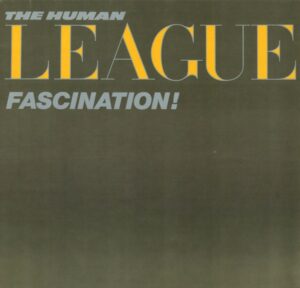 Trying to follow-up ‘Dare’ proved to be a fractious experience with producer Martin Rushent leaving the sessions after creative conflicts with various members of THE HUMAN LEAGUE. The few completed tracks were issued on a North American mini-album. While included were the ‘Love Action’ B-side ‘Hard Times’, the catchy title single and the electro-Tamla of ‘Mirror Man’, they were topped by ‘You Remind Me Of Gold’ and Rushent’s mix of ‘I Love You too Much’.
Trying to follow-up ‘Dare’ proved to be a fractious experience with producer Martin Rushent leaving the sessions after creative conflicts with various members of THE HUMAN LEAGUE. The few completed tracks were issued on a North American mini-album. While included were the ‘Love Action’ B-side ‘Hard Times’, the catchy title single and the electro-Tamla of ‘Mirror Man’, they were topped by ‘You Remind Me Of Gold’ and Rushent’s mix of ‘I Love You too Much’.
‘Fascination!’ is still available as part of the boxed set ‘The Virgin Years’ via Virgin Records
https://www.thehumanleague.co.uk/
NAKED EYES Burning Bridges
 Pete Byrne and Rob Fisher were NAKED EYES and while their Simmons heavy Bacharach & David cover of ‘Always Something There To Remind Me’ didn’t trouble the UK Top 40, it reached No8 in the US. Produced by Tony Mansfield of NEW MUSIK, the eponymous debut album used a Fairlight, Synclavier 2, PPG Wave 2.2, Emulator, OBX-a and Prophet 5. Not another Bacharach & David cover, a further US hit came with ‘Promises Promises’.
Pete Byrne and Rob Fisher were NAKED EYES and while their Simmons heavy Bacharach & David cover of ‘Always Something There To Remind Me’ didn’t trouble the UK Top 40, it reached No8 in the US. Produced by Tony Mansfield of NEW MUSIK, the eponymous debut album used a Fairlight, Synclavier 2, PPG Wave 2.2, Emulator, OBX-a and Prophet 5. Not another Bacharach & David cover, a further US hit came with ‘Promises Promises’.
‘Burning Bridges’ is still available as ‘Naked Eyes’ via Chrysalis Records
https://www.nakedeyesmusic.com/
NEW ORDER Power, Corruption & Lies
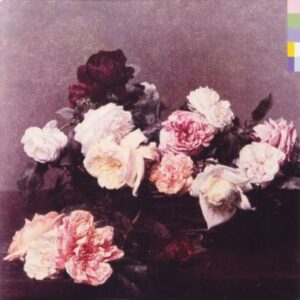 Using sequencer-like effects on interim singles ‘Everything’s Gone Green’ and ‘Temptation’ had set NEW ORDER on a new path and while there were still guitar driven songs such as ‘Age Of Consent’ and ‘Leave Me Alone’, hybrids such as ‘The Village’ and ‘Ultraviolence’ utilised a pulsing electronic backbone. ‘Your Silent Face’, dubbed the “KRAFTWERK one”, was the ultimate romantic homage to Kling Klang but strangely, the track that seeded it all ‘586’ lost its menace in its album incarnation.
Using sequencer-like effects on interim singles ‘Everything’s Gone Green’ and ‘Temptation’ had set NEW ORDER on a new path and while there were still guitar driven songs such as ‘Age Of Consent’ and ‘Leave Me Alone’, hybrids such as ‘The Village’ and ‘Ultraviolence’ utilised a pulsing electronic backbone. ‘Your Silent Face’, dubbed the “KRAFTWERK one”, was the ultimate romantic homage to Kling Klang but strangely, the track that seeded it all ‘586’ lost its menace in its album incarnation.
‘Power, Corruption & Lies’ is still available via Warner Music
OMD Dazzle Ships
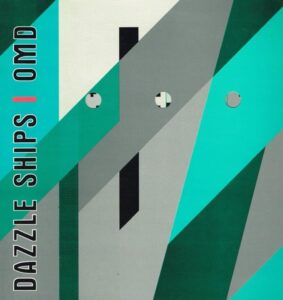 A brave sonic exploration of Cold War tensions and economic corruption, ‘Dazzle Ships’ was not what Virgin Records expected from OMD after three Top5 hits. Of its two singles, the jangly ‘Genetic Engineering’ was only a minor hit while the scathing attack on TV evangelism ‘Telegraph’ failed to get into the Top40. Although it featured some of the band’s best songs like ‘The Romance Of The Telescope’, ‘International’ and ‘Radio Waves’, ‘Dazzle Ships’ sold poorly on release but it has since been re-evaluated.
A brave sonic exploration of Cold War tensions and economic corruption, ‘Dazzle Ships’ was not what Virgin Records expected from OMD after three Top5 hits. Of its two singles, the jangly ‘Genetic Engineering’ was only a minor hit while the scathing attack on TV evangelism ‘Telegraph’ failed to get into the Top40. Although it featured some of the band’s best songs like ‘The Romance Of The Telescope’, ‘International’ and ‘Radio Waves’, ‘Dazzle Ships’ sold poorly on release but it has since been re-evaluated.
‘Dazzle Ships’ is still available via Virgin Records
SOFT CELL The Art Of Falling Apart
 Pop stardom did not suit SOFT CELL so there was no option but for Marc Almond and Dave Ball to self-destruct. The imploding disposition of ‘The Art Of Falling Apart’ title song couldn’t have soundtracked a mental breakdown any better. Despite the sinister romp of ‘Baby Doll’ and the explicit ode to promiscuity ‘Numbers’, ‘Forever The Same’ and ‘Loving You Hating Me’ could have been a singles, while ‘Where The Heart Is’ and ‘Kitchen Sink Drama’ featured highly relatable domestic narratives.
Pop stardom did not suit SOFT CELL so there was no option but for Marc Almond and Dave Ball to self-destruct. The imploding disposition of ‘The Art Of Falling Apart’ title song couldn’t have soundtracked a mental breakdown any better. Despite the sinister romp of ‘Baby Doll’ and the explicit ode to promiscuity ‘Numbers’, ‘Forever The Same’ and ‘Loving You Hating Me’ could have been a singles, while ‘Where The Heart Is’ and ‘Kitchen Sink Drama’ featured highly relatable domestic narratives.
‘The Art Of Falling Apart’ is still available via Mercury Records
TEARS FOR FEARS The Hurting
 With a magnificent combination of synth, preset rhythms and conventional instruments, ‘Mad World’ had set the scene for TEARS FOR FEARS’ debut album ‘The Hurting’. But it disappointed some, as it not only had all four singles to date been included but also two B-sides. But the majority had been reworked while the fraught tensions of the title song and ‘Memories Fade’ found favour amongst the new material. The re-recorded ‘Pale Shelter’ became a hit on second time of asking too.
With a magnificent combination of synth, preset rhythms and conventional instruments, ‘Mad World’ had set the scene for TEARS FOR FEARS’ debut album ‘The Hurting’. But it disappointed some, as it not only had all four singles to date been included but also two B-sides. But the majority had been reworked while the fraught tensions of the title song and ‘Memories Fade’ found favour amongst the new material. The re-recorded ‘Pale Shelter’ became a hit on second time of asking too.
‘The Hurting’ is still available via Mercury Records
THOMPSON TWINS Quick Step & Side Kick
 Now down to a trio, the Alex Sadkin produced ‘Quick Step & Side Kick’ was the third THOMPSON TWINS album. Although ‘Love On Your Side’ was to be the breakthrough hit with the catchy but potentially annoying ‘We Are Detective’ following, the exotic funky non-hit ‘Lies’ deserved greater recognition while ‘Judy Do’ gloriously borrowed from Lou Reed’s ‘Satellite Of Love’. This was without the Grace Jones cameo on the bonkers ‘Watching’ and the rousing ‘If You Were There’.
Now down to a trio, the Alex Sadkin produced ‘Quick Step & Side Kick’ was the third THOMPSON TWINS album. Although ‘Love On Your Side’ was to be the breakthrough hit with the catchy but potentially annoying ‘We Are Detective’ following, the exotic funky non-hit ‘Lies’ deserved greater recognition while ‘Judy Do’ gloriously borrowed from Lou Reed’s ‘Satellite Of Love’. This was without the Grace Jones cameo on the bonkers ‘Watching’ and the rousing ‘If You Were There’.
‘Quick Step & Side Kick’ is still available via Edsel Records
http://www.thompsontwinstombailey.co.uk/
WHITE DOOR Windows
 WHITE DOOR formed from the ashes of prog rock combo GRACE. Led by the sensitive vocal presence of Mac Austin, he backed by the Davies brothers Harry and John on synths. Produced by a young Andy Richards, ‘Windows’ saw its title song get BBC Radio1 airplay. The beautiful choir boy synthpop of ‘Jerusalem’ was later covered by Swedish synthesist Johan Baeckström, along with another album track ‘School Days’. Baeckström wolud join the trio for their 2020 comeback.
WHITE DOOR formed from the ashes of prog rock combo GRACE. Led by the sensitive vocal presence of Mac Austin, he backed by the Davies brothers Harry and John on synths. Produced by a young Andy Richards, ‘Windows’ saw its title song get BBC Radio1 airplay. The beautiful choir boy synthpop of ‘Jerusalem’ was later covered by Swedish synthesist Johan Baeckström, along with another album track ‘School Days’. Baeckström wolud join the trio for their 2020 comeback.
‘Windows’ is still available as a CD from Cherry Red Records
https://www.facebook.com/whitedoorband/
YAZOO You & Me Both
 Despite the success of ‘Upstairs At Eric’s’, all was not well in the YAZOO camp so by the time of ‘You & Me Both’, Vince Clarke and Alison Moyet were working in the studio separately. ‘Ode To Boy’ was rescued from B-side obscurity while ‘Nobody’s Diary’ was the mighty swansong single. The album contained Moyet’s poignant anti-war statement ‘Mr Blue’ but in the Vince Clarke voiced ‘Happy People’, he came up with his most polarising composition since ‘What’s Your Name?’.
Despite the success of ‘Upstairs At Eric’s’, all was not well in the YAZOO camp so by the time of ‘You & Me Both’, Vince Clarke and Alison Moyet were working in the studio separately. ‘Ode To Boy’ was rescued from B-side obscurity while ‘Nobody’s Diary’ was the mighty swansong single. The album contained Moyet’s poignant anti-war statement ‘Mr Blue’ but in the Vince Clarke voiced ‘Happy People’, he came up with his most polarising composition since ‘What’s Your Name?’.
‘You & Me Both’ is still available via Mute Records
YELLOW MAGIC ORCHESTRA Naughty Boys
 As a reaction to the over-seriousness of their previous two albums, YELLOW MAGIC ORCHESTRA lightened up considerably for ‘Naughty Boys’. The most commercial record of their career, this was highlighted by the joyous lead single ‘Kimi Ni Mune Kyun’. But while ‘Opened My Eyes’ could have been any Western synthpop act, ‘Lotus Love’ revealed some unexpected psychedelic overtones and ‘Kai-Koh’ showed that the trio had not lost their ear for exotic timbres.
As a reaction to the over-seriousness of their previous two albums, YELLOW MAGIC ORCHESTRA lightened up considerably for ‘Naughty Boys’. The most commercial record of their career, this was highlighted by the joyous lead single ‘Kimi Ni Mune Kyun’. But while ‘Opened My Eyes’ could have been any Western synthpop act, ‘Lotus Love’ revealed some unexpected psychedelic overtones and ‘Kai-Koh’ showed that the trio had not lost their ear for exotic timbres.
‘Naughty Boys’ is still available via Sony Music
Text by Chi Ming Lai
19th January 2023











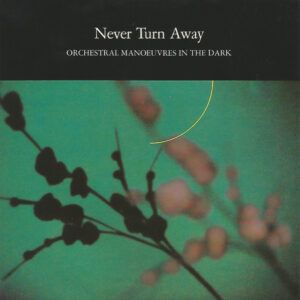




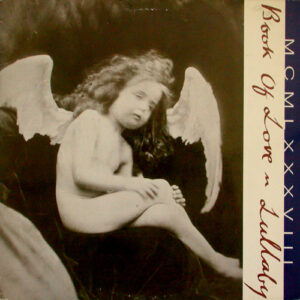






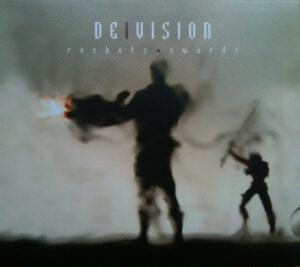



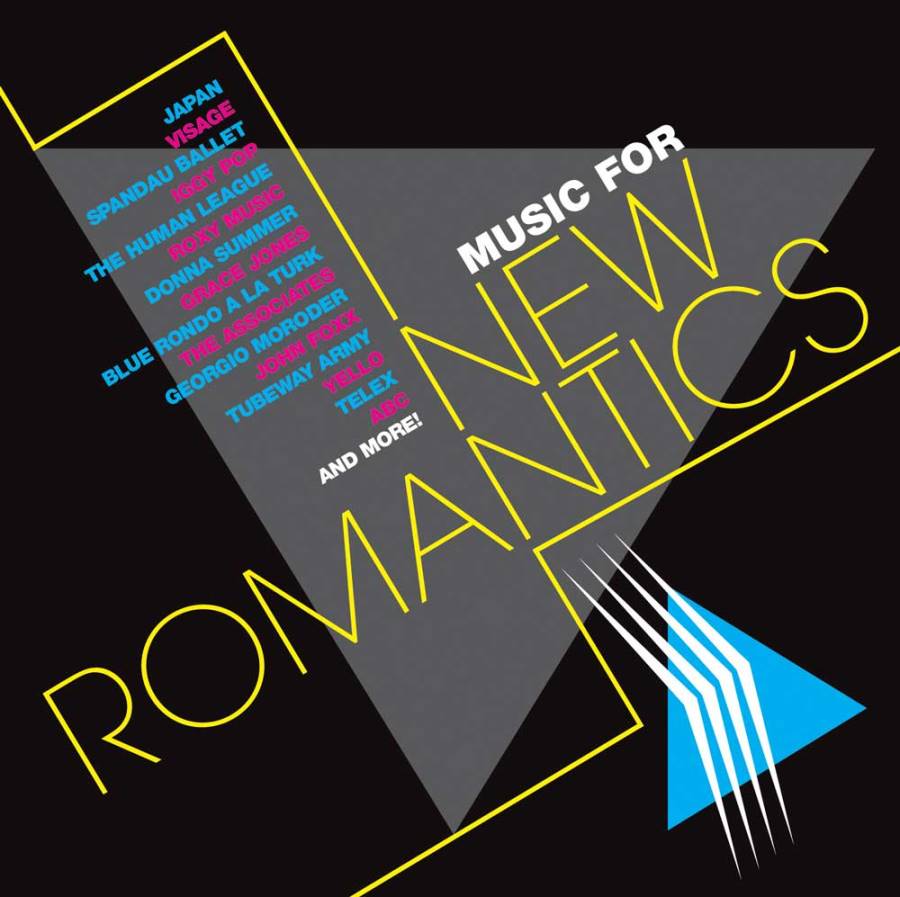








Follow Us!